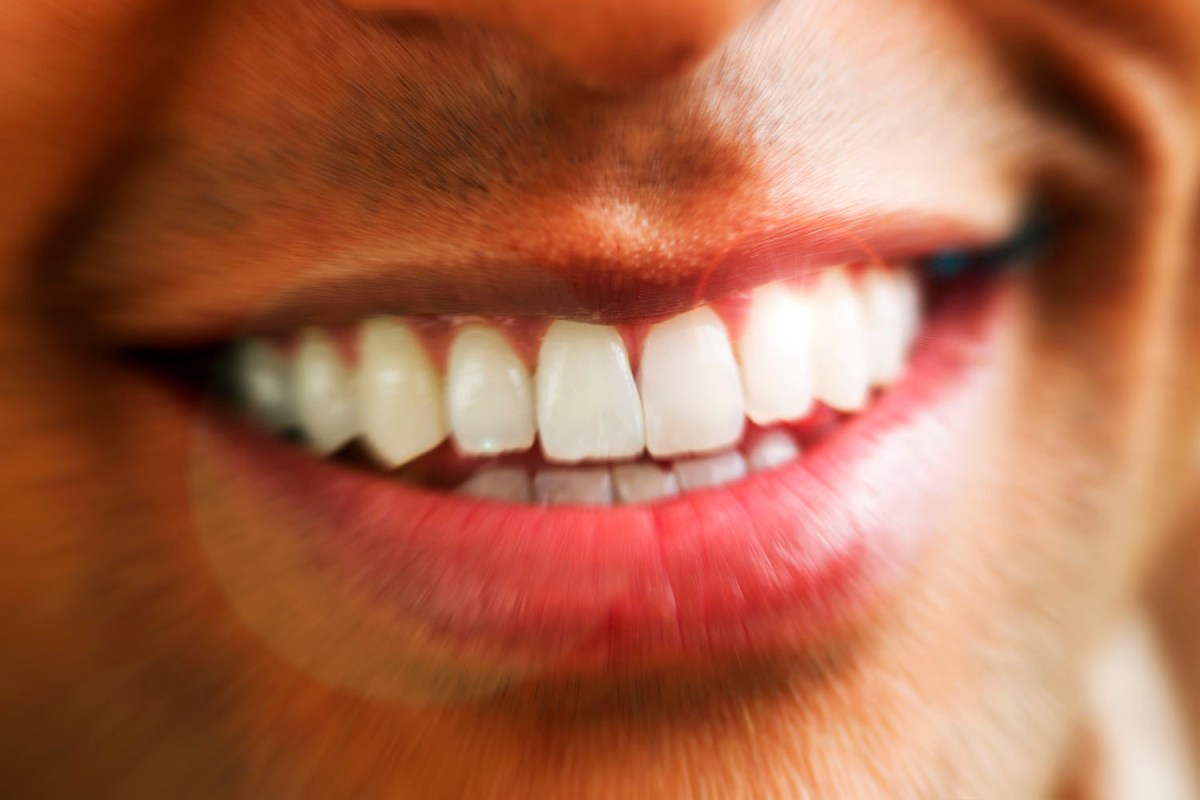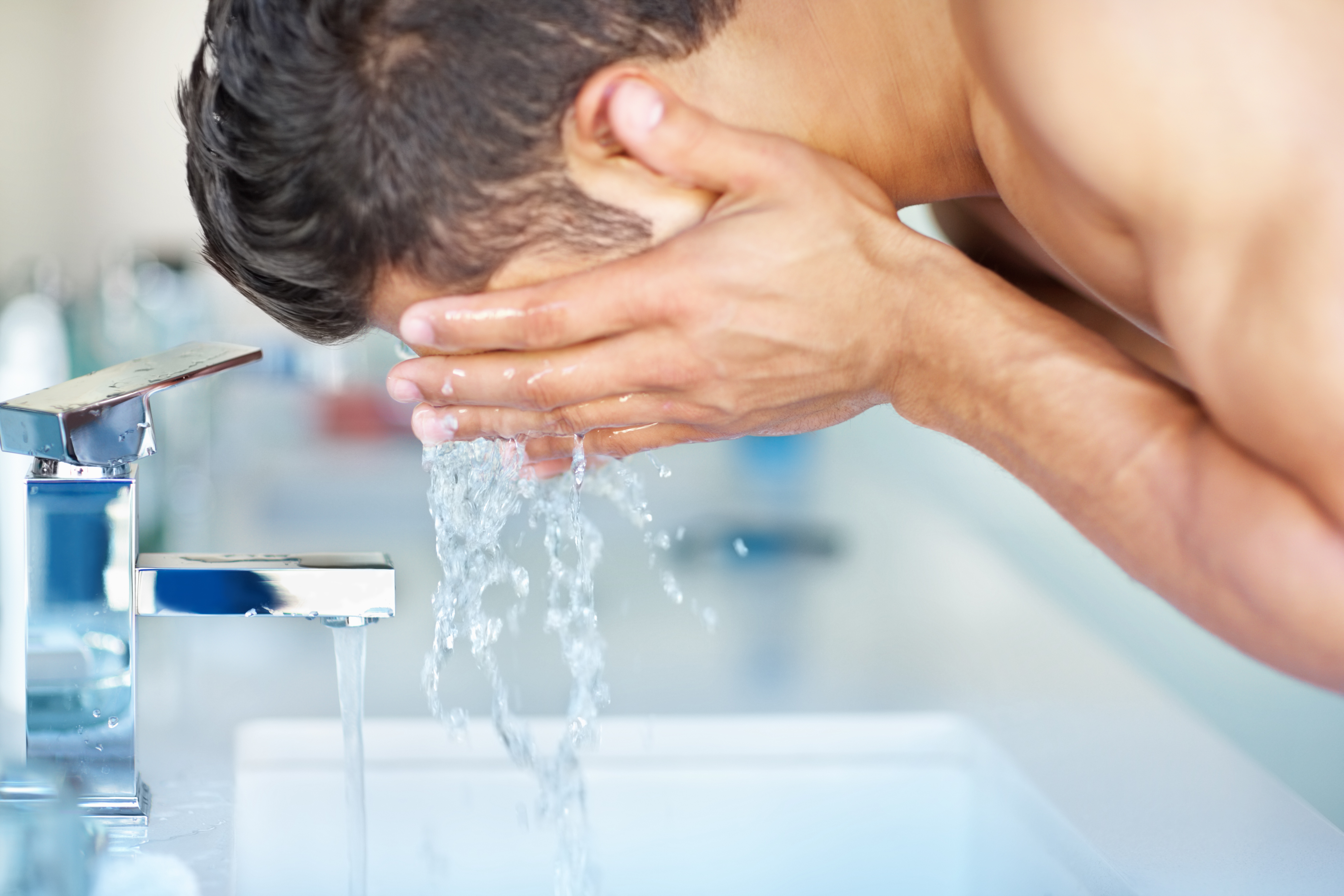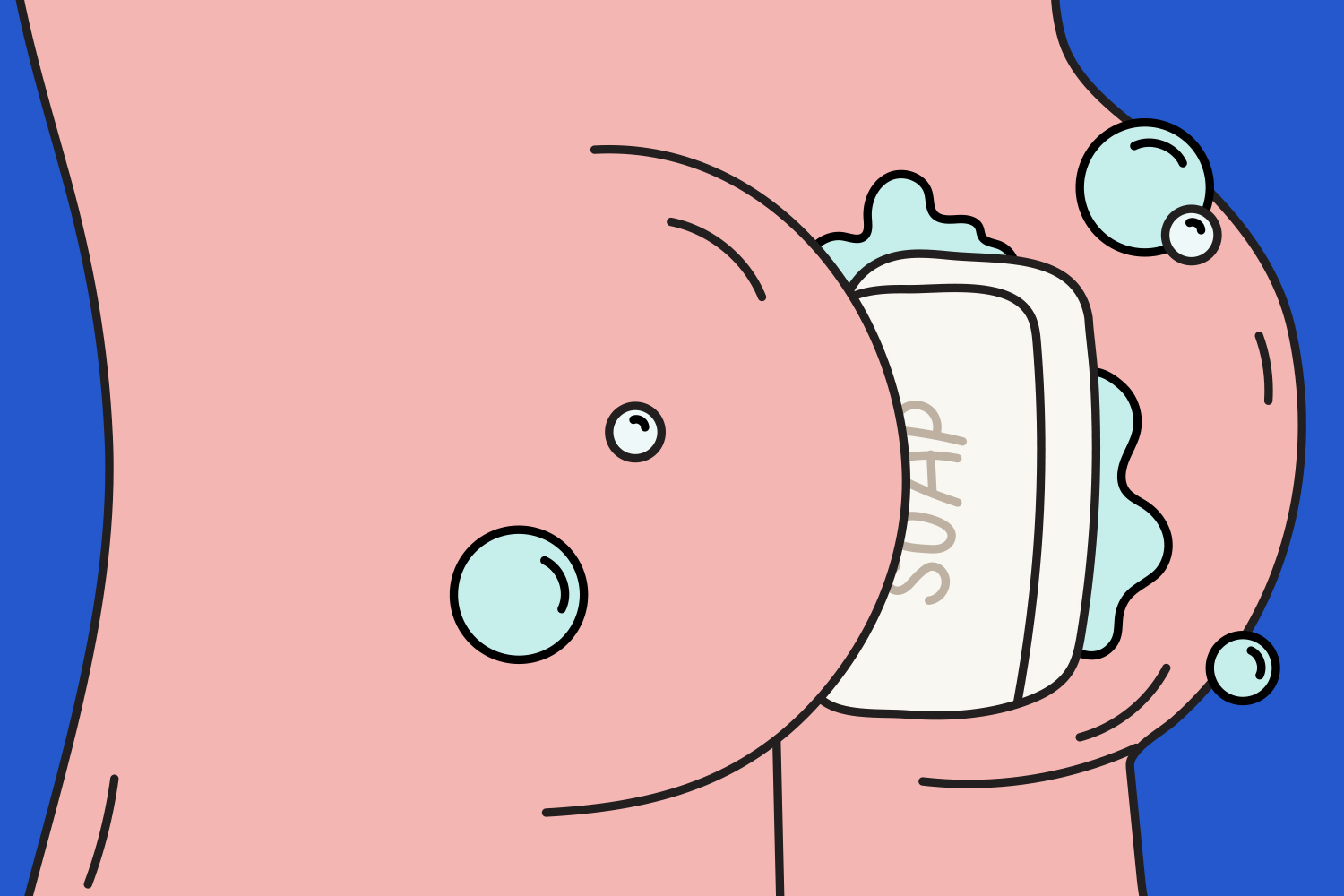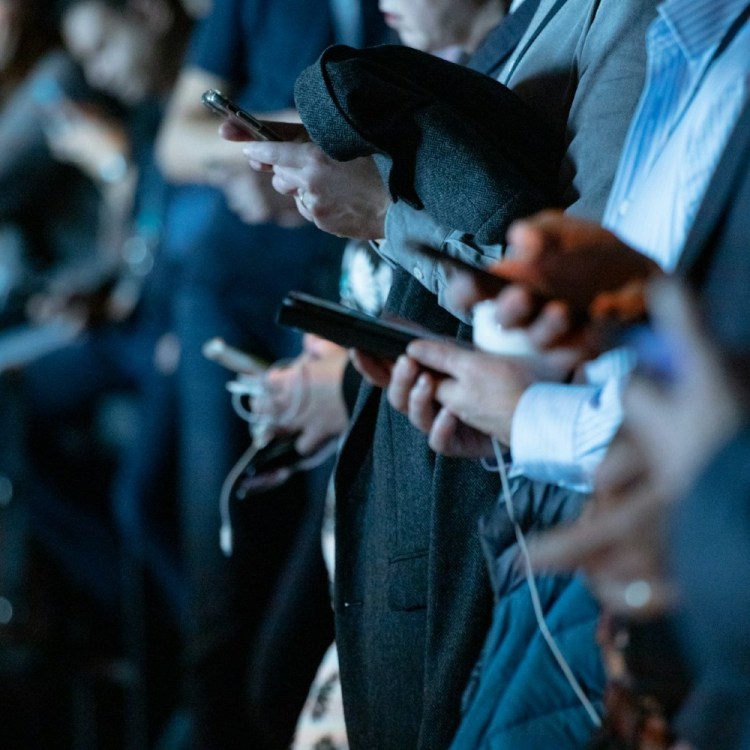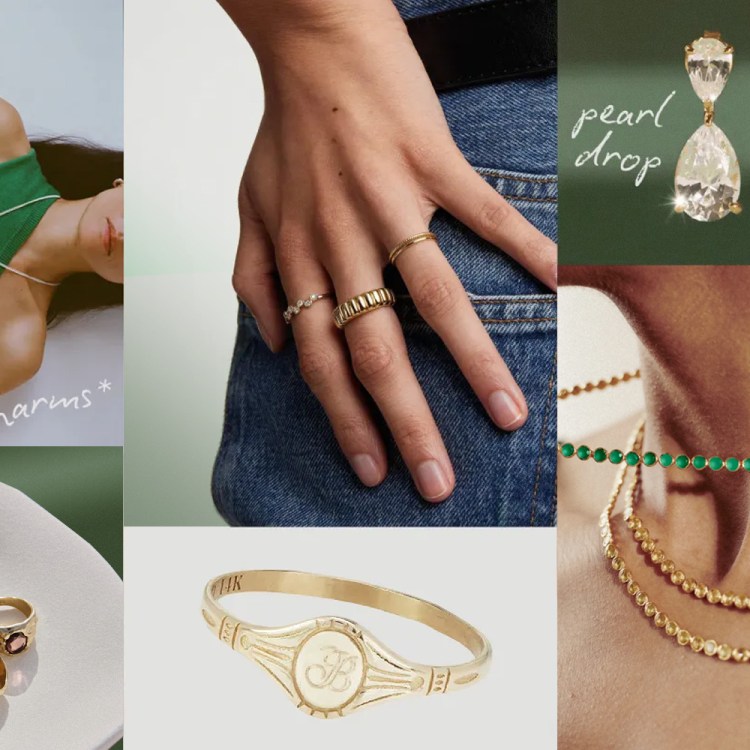Cosmetic dentistry is a $21.9 billion industry that’s projected to reach $30.1 billion by 2025. According to market reports, advances in technology, dental techniques and minimally invasive procedures coupled with increasing consumer demand for cosmetic procedures like tooth whitening, veneers and dental crowns have caused the industry to flourish. All of this along with, of course, the continued emphasis on aesthetics and personal appearance we can attribute to the rise of social media, and now our webcams during Zoom meetings.
While the demand for all cosmetic procedures has risen over the years, the desire for whiter teeth has seen especially significant growth, and a quick scroll through your Instagram ads will likely show you a market that’s trying to capitalize on our insecurities. There are now hundreds of at-home teeth-whitening brands, kits and products, many of which are heralded by celebrities and Instagram influencers as all-natural or “accelerated” teeth-whitening solutions.
Of course, there is nothing wrong with wanting to improve your appearance if it means bolstering some confidence and feeling good. As someone who enjoys black coffee and red wine, I have attempted multiple times to get into teeth whitening myself, but have repeatedly failed. The biggest issue? I am the kind of person who gets severely overwhelmed in the grocery store and once bought cabbage instead of a head of lettuce out of pure panic, and being faced with a bazillion teeth-whitening products all claiming to do the same thing puts me in a not-so-great headspace to make an effective financial decision.
That’s why I spoke with Dr. Emanuel Layliev, the former president of the New York Academy of Cosmetic Dentistry and a premier cosmetic dentist at the New York Center for Cosmetic Dentistry in Manhattan, to get the low-down on all things teeth whitening, in the hopes of weeding out all the sponcon bullshit and finding the procedures actually worth your money.
First, let’s talk about what causes discoloration
Tooth discoloration is categorized into two groups: extrinsic and intrinsic stains, according to the American Dental Association (ADA). Intrinsic stains can be caused by genetic disorders, aging and certain antibiotic use during childhood, and occur within the teeth. Extrinsic stains happen due to certain “lifestyle habits” like smoking or consuming heavily pigmented food and drink.
“Basically there’s the proverbial adage that anything that will stain in a white shirt will stain in your teeth,” says Layliev. “So just in general, that’s a guideline to bear in mind. Dark coffee, tea, red wine, balsamic vinaigrette, soy sauce, blueberries, raspberries, chocolate, peanut butter, any kind of sauces that are dark as well, those are the main culprits.”
Reducing those stains involves some chemical reactions to occur. According to the ADA, carbamide peroxide and hydrogen peroxide are the most common ingredients used in bleaching and work by penetrating the tooth enamel to get to those discolored molecules. When oxygen molecules generated by the hydrogen peroxide found inside whitening agents react to organic chromophores (aka the discolored stains), the bleaching process begins.
With that little chemistry lesson out of the way, let’s get into the vast world of at-home teeth whitening.
Teeth-Whitening Strips
The most popular at-home teeth-whitening method is also the most effective, according to Layliev, who recommends using Crest Whitestrips.
“They’ve been around for such a long time and I highly recommend them. And the reason I do think highly about them is because they’re just a medium that has the ability to stay on the teeth, because it’s all about contact time,” he explains.
Results could take 1-3 weeks to show, so the process is a bit more drawn out than if you were to get your teeth professionally whitened, since there isn’t much of a concentration of peroxide in whitening strips. It also might be challenging to get a uniform bleach if teeth aren’t lined up properly or crowding is present, notes Layliev.
Still, if you’re not interested in shelling out for a professional procedure, whitening strips are your best bet at producing the results you want at an affordable price.
Teeth-Whitening Pens
Teeth-whitening pens have been around the market for a while as well, but in recent years have gotten the celebrity/influencer treatment, most notably from Kardashian-clan member Kendall Jenner. The supermodel’s oral care line MOON features a sleek black, 100% vegan teeth whitening pen that claims it “instantly brightens teeth and whitens over time.”
While we haven’t tried Jenner’s pen out for ourselves and therefore can’t rate its efficiency, Layliev says whitening pen in general are suited more for maintenance rather than initial teeth bleaching, but are still effective, convenient tools for touching up on-the-go.
“It’s great to use all of those as just maintenance of the teeth. Those whitening pens are really nice to use,” says Layliev. “The Zoom! company has a nice whitening pen that we do recommend as well.”
LED Teeth Whitening Kits
Another teeth-whitening product you’ve most likely seen celebs and influencers pushing on Instagram involves awkwardly sticking an LED light into your mouth.
Teeth-whitening kits from brands like iSmile and HiSmile (the brand touted by the Kardashians) are designed to mimic cosmetic dentist technology by using an LED light to activate whitening gel and quickly whiten teeth (like 10 minutes quick). Many of these kits cost upwards of $100.
But as with almost all products lauded by Instagram influencers, there are a few caveats to be aware of says Layliev.
“The concentration of peroxide is just not strong enough, and it’s not really controlled enough to prevent the buildup of saliva during the use of it at home,” he explains.
“So I wouldn’t really recommend it as much because I really feel that Crest Whitestrips are superior to that, because using [an LED kit] doesn’t allow for more of a controlled process compared to what we would do within the office in our controlled environment,” he adds. “So anything over the counter, I’d stick with the Whitestrips, and any kind of pens like a Zoom! pen are nice for on-the-go maintenance.”
Activated Charcoal
Charcoal-based toothpaste, toothbrushes, powders and mouthwashes have also infiltrated the oral care sphere over the past few years, and are often marketed as “natural” teeth whiteners.
The claim is that activated charcoal, which is a toxin-absorbent sometimes used in the ER to treat drug overdoses, naturally absorbs plaque and stains from teeth. However, these claims are largely anecdotal, and there are still no concrete scientific studies or evidence that prove the teeth-whitening abilities of activated charcoal. If anything, brushing your teeth with charcoal-based products could end up being a real pain in the ass.
“Charcoal toothpaste is a nice concept, but it’s tricky because if one has any restorations like composites, bondings, veneers or crowns, it may stain the margins for a while and it may be difficult to cleanse that off by yourself at home,” explains Layliev. “So I’d be a little skeptical in using that and sticking with it as the only bleach method.”
The Old-School Baking Soda and Hydrogen Peroxide Method
We’re sure you’ve tried the classic at-home method of mixing a tablespoon of Arm & Hammer with two tablespoons of hydrogen peroxide to create a homemade whitening paste. As noted above, many teeth-whitening products today contain hydrogen peroxide as the main bleaching ingredient, so this at-home remedy is actually pretty effective. However, Layliev warns if you’re going to opt for this method, do so in moderation.
“I wouldn’t do it daily. I would do it maybe twice a week maximum, because over time it will abrade your teeth. It’s too harsh,” he says. “And always use a soft-bristled toothbrush if one is using any form of baking soda or peroxide at that point to not over-abrade.”
So what if I want to skip all that manual labor and get professionally whitened?
Obviously, if you’re looking for pristine, precise and long-lasting white teeth, getting professionally whitened might be the best option for you.
“I’d say it’s always best to do a professional whitening within the office because there’s exact control over that process,” says Layliev.
“We’re able to mask any areas of the teeth that may be sensitive due to wear or recession. We’re able to mask the gum tissue properly, the lips and the skin, and just to do that with the highest form of concentrated peroxide so that we optimize the results to the best possible potential. Doing it within the office allows us to use the highest percentage of peroxide in order to achieve the best possible result in a controlled fashion. It’s usually an instant result, and with guidance,” he adds.
Many dental offices use something called a Zoom! Teeth Whitening system, which involves applying a peroxide-containing gel to the teeth and in three 15-minute intervals exposes them to a blue-light lamp that then activates the hydrogen peroxide in the whitening gel, bleaching away the stains in the enamel and dentin layers of the teeth. The process takes a little over an hour, can last anywhere between two to five years (sometimes longer) and will cost you around $750, depending on where you live. After the procedure, you’ll also typically be given at-home bleaching trays to help maintain results.
The New York Center for Cosmetic Dentistry has also developed a technique called a Quick White, which Layliev explains is an abbreviated Zoom! session where instead of three cycles, it’s just one teeth-whitening cycle of 15 minutes. The method is recommended for those looking for a quick touch-up and costs $275.
Like other offices, Layliev’s NY Center also offers at-home whitening trays without the full service. This method can take up to a week and can cost around $400, an effective but slightly more affordable option if you’re looking for professional results.
Other things to know: For sensitive teeth, Layliev recommends using Listerine Sensitivity Zero Alcohol mouthwash and Colgate Sensitive Toothpaste two weeks prior to your full Zoom! session (and to take a couple of Advils an hour before).
You’ll also want to stay away from dark food and drink for about a day or two after a procedure, as the pores of the enamel are slightly open initially after a whitening and can absorb stains until they start to rehydrate and close up.
Maintenance Products
In conjunction with whatever teeth-whitening method you choose, using whitening toothpaste is also helpful for maintaining those pearly whites.
Layliev recommends Colgate Optic White Advanced or Crest 3D White Brilliance; however, if you really want to step up your teeth-whitening game, the Supersmile Accelerator is a highly recommended product to add to your routine.
“Over time, people can stain their teeth, and the Supersmile Accelerator is just phenomenal in countering that stain buildup,” says Layliev, who explains the Accelerator is just abrasive enough to counteract those textured stains from coffee or wine and effectively cleanse them.
“If you mix just a little bit of it with any toothpaste you use at home once or twice a day, it’ll just keep any stain at bay from any textured teeth that just naturally are shaped that way,” he adds. “I even use it myself.”
Additionally, you may often have the urge to immediately brush your teeth after consuming heavily pigmented food and drink, or just after eating a regular meal, but Layliev warns against this, as it can over-abrade your teeth.
“After a meal, it’s important to not brush your teeth for 30 minutes, because that’s when digestion starts and the environment inside the mouth is acidic,” he explains. “So if even brushing lightly with anything, that would over-abrade the teeth, just because there’s already acid in the mouth naturally.”
“A good thing to do is after having something dark, just chase it away with any kind of sparkling water or some rinse, but not to brush your teeth immediately after,” he adds.
Hopefully you can now navigate the world of teeth whitening with an added bit of mindfulness, and decipher what method works best for you — if you so choose. In a world where we’re inundated by heavily modified photos of not just celebrities, but friends and casual acquaintances, it can become easy to hold yourself to some ridiculous, Kardashian-esque standard. Still, there’s no shame in admitting it feels good to look good, especially in a year when we haven’t had a reason to dress to impress very often. So, as with all self-grooming and cosmetics, whatever sparks joy and self-confidence, especially now, is encouraged.
“It’s important, even though we all have masks over our faces, there are other ways to still impress others and feel good about yourself because it’s just tough,” notes Layliev. “Everyone’s having a hard time in this pandemic, and I just recommend to do a lot more of what makes one happy.”
The Charge will help you move better, think clearer and stay in the game longer. Subscribe to our wellness newsletter today.
